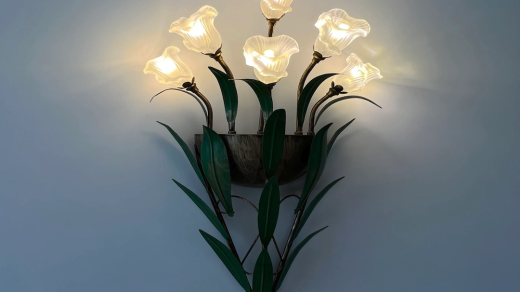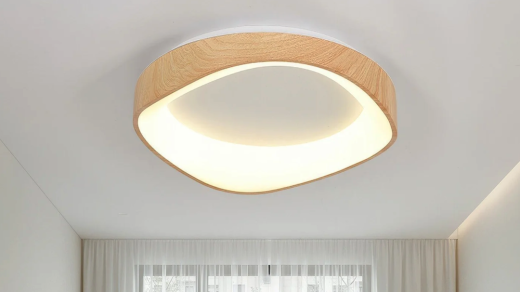In recent years, outdoor lighting has transcended its traditional role of mere illumination, evolving into a vital component of landscape design. Among the various styles available, geometric outdoor lights have gained significant popularity due to their modern aesthetic and versatility. These lights, characterized by their clean lines and distinct shapes, can transform any outdoor space into a visually striking environment.
Whether adorning a garden path, accentuating architectural features, or creating a cozy ambiance for outdoor gatherings, geometric lights offer both functionality and artistic appeal. The allure of geometric outdoor lights lies not only in their design but also in their ability to harmonize with various architectural styles. From contemporary homes with sleek facades to rustic cottages surrounded by nature, these lights can complement and enhance the overall aesthetic.
As homeowners increasingly seek to create inviting outdoor spaces that reflect their personal style, geometric lighting has emerged as a favored choice. This article delves into the different types of geometric outdoor lights, their benefits, selection criteria, installation tips, creative applications, and maintenance practices to ensure they remain a stunning feature of your outdoor environment.
Types of Geometric Outdoor Lights
Geometric outdoor lights come in a myriad of designs, each offering unique characteristics that cater to different needs and preferences. One popular type is the geometric pendant light, which hangs from above and can create a dramatic focal point in outdoor dining areas or patios. These lights often feature intricate designs that cast captivating shadows on surrounding surfaces, enhancing the ambiance during evening gatherings.
For instance, a hexagonal pendant light can add a touch of sophistication while providing ample illumination for dining or entertaining. Another common type is the geometric wall sconce, which is mounted directly onto exterior walls. These fixtures are ideal for illuminating entryways or pathways while adding an artistic element to the architecture.
Wall sconces come in various shapes—triangular, square, or circular—and can be used to highlight specific features of a home’s exterior. For example, a series of triangular sconces flanking a front door can create a welcoming atmosphere while ensuring safety and visibility. In addition to pendants and sconces, geometric floor lamps and stake lights are also popular choices for outdoor spaces.
Floor lamps can be strategically placed on patios or decks to provide ambient lighting, while stake lights can be inserted into the ground along pathways or garden beds. These lights often feature minimalist designs that blend seamlessly with natural surroundings, allowing the beauty of the landscape to shine through while still providing necessary illumination.
Benefits of Using Geometric Outdoor Lights
The advantages of incorporating geometric outdoor lights into your landscape design extend beyond mere aesthetics. One significant benefit is their ability to enhance safety and security around your property. Well-placed lighting can illuminate dark areas, reducing the risk of accidents and deterring potential intruders.
For instance, installing stake lights along a garden path not only guides guests safely but also discourages unwanted visitors by ensuring that all areas are well-lit. Moreover, geometric outdoor lights contribute to energy efficiency when designed with LED technology. LED lights consume significantly less energy compared to traditional incandescent bulbs while providing brighter illumination.
This energy efficiency translates into lower electricity bills and a reduced carbon footprint, making them an environmentally friendly choice for homeowners looking to minimize their impact on the planet. Additionally, many modern geometric lights come with smart technology options that allow users to control brightness levels and set timers, further enhancing energy savings. Another compelling reason to choose geometric outdoor lights is their versatility in design and application.
These fixtures can be used in various settings—from residential gardens to commercial spaces—allowing for creative expression in outdoor design. Their modern aesthetic can seamlessly integrate with both contemporary and traditional landscapes, making them suitable for diverse architectural styles. Furthermore, the variety of shapes and sizes available means that homeowners can select fixtures that best fit their specific needs and preferences.
How to Choose the Right Geometric Outdoor Lights for Your Space
Selecting the appropriate geometric outdoor lights for your space involves several considerations that ensure both functionality and aesthetic appeal. First and foremost, it is essential to assess the specific areas you wish to illuminate. For instance, if you are looking to light up a pathway, stake lights with low profiles may be ideal as they provide subtle illumination without obstructing views or creating hazards.
Conversely, if you want to highlight architectural features or create an inviting atmosphere on a patio, pendant or wall sconces may be more suitable. Another critical factor is the scale of the lighting fixtures in relation to your outdoor space. Larger geometric lights can serve as statement pieces in expansive areas, while smaller fixtures may be more appropriate for intimate settings such as balconies or small gardens.
It is also important to consider the color temperature of the lights; warmer tones tend to create a cozy ambiance, while cooler tones can evoke a more modern feel. Homeowners should also take into account the overall color scheme of their outdoor space to ensure that the lighting complements existing elements. Budget is another crucial aspect when choosing geometric outdoor lights.
While there are options available at various price points, investing in high-quality fixtures can yield long-term benefits in terms of durability and energy efficiency. Homeowners should also consider maintenance costs associated with different materials; for example, metal fixtures may require more upkeep than those made from weather-resistant plastics or glass. By carefully evaluating these factors, homeowners can make informed decisions that enhance their outdoor spaces without overspending.
Installation and Placement of Geometric Outdoor Lights
Proper installation and placement of geometric outdoor lights are essential for maximizing their effectiveness and aesthetic appeal. When installing wall sconces or pendant lights, it is crucial to consider the height at which they will be mounted. Generally, wall sconces should be installed at eye level—approximately 60 inches from the ground—to ensure optimal visibility and impact.
For pendant lights over dining areas or patios, hanging them at a height that allows for comfortable conversation without obstructing views is key; typically, this means positioning them about 30-36 inches above table height. For pathway lighting using stake lights or bollards, spacing is another important consideration. A common guideline is to place these fixtures approximately 6-8 feet apart to provide consistent illumination without creating overly bright spots or dark gaps.
Additionally, it is advisable to angle pathway lights slightly inward toward the path rather than straight ahead; this technique helps create a more inviting atmosphere while ensuring safety. When planning the layout of your outdoor lighting scheme, it is beneficial to consider layering different types of lighting—ambient, task, and accent—to achieve a well-rounded effect. Ambient lighting provides general illumination for safety and navigation; task lighting focuses on specific areas where activities occur (such as cooking or dining), while accent lighting highlights architectural features or landscaping elements.
By thoughtfully combining these layers with geometric outdoor lights, homeowners can create dynamic spaces that are both functional and visually appealing.
Creative Ways to Use Geometric Outdoor Lights in Your Outdoor Space
The versatility of geometric outdoor lights allows for numerous creative applications that can elevate your outdoor space beyond traditional uses. One innovative approach is using these fixtures as part of a decorative focal point in gardens or patios. For example, grouping several pendant lights of varying heights above an outdoor seating area can create an enchanting atmosphere reminiscent of an upscale restaurant terrace.
This arrangement not only provides ample light but also adds visual interest through varying shapes and sizes. Another imaginative use involves incorporating geometric lights into landscaping features such as planters or garden beds. By embedding stake lights within flower beds or around trees, homeowners can create stunning visual effects that highlight plant textures and colors during nighttime hours.
This technique not only enhances the beauty of the landscape but also draws attention to specific plants or features that might otherwise go unnoticed after dark. Geometric outdoor lights can also serve functional purposes beyond mere illumination; they can be integrated into furniture designs for added flair. For instance, incorporating LED strip lighting into benches or tables can create an inviting glow that encourages social interaction during evening gatherings.
Additionally, using geometric lanterns as centerpieces on dining tables can enhance the overall dining experience by providing soft light that complements food presentation.
Maintenance and Care of Geometric Outdoor Lights
To ensure that geometric outdoor lights continue to shine brightly and maintain their aesthetic appeal over time, regular maintenance and care are essential. One primary aspect of upkeep involves cleaning the fixtures periodically to remove dirt, dust, and debris that may accumulate due to exposure to the elements. For most materials—such as metal or glass—using a soft cloth with mild soap and water is sufficient for cleaning without causing damage.
Homeowners should avoid abrasive cleaners that could scratch surfaces or dull finishes. In addition to cleaning, it is important to inspect the electrical components of outdoor lighting regularly. Checking for frayed wires or loose connections can prevent potential hazards such as electrical shorts or fire risks.
If any issues are detected during inspections, it is advisable to consult a professional electrician for repairs rather than attempting DIY fixes that could compromise safety. Seasonal maintenance is also crucial for preserving the longevity of geometric outdoor lights. In regions with harsh winters or extreme weather conditions, homeowners may want to consider removing certain fixtures during off-seasons to prevent damage from snow or ice accumulation.
Additionally, applying protective coatings designed for outdoor use can help shield metal fixtures from rusting or corrosion over time.
Enhancing Your Outdoor Space with Geometric Outdoor Lights
Geometric outdoor lights represent more than just functional fixtures; they embody a fusion of art and utility that enhances any outdoor environment. By understanding the various types available and their benefits, homeowners can make informed choices that align with their design vision while ensuring safety and energy efficiency. The thoughtful selection and strategic placement of these lights can transform ordinary spaces into extraordinary experiences.
As creativity flourishes in landscape design, geometric outdoor lights offer endless possibilities for personalization and expression in outdoor settings. With proper care and maintenance, these fixtures will not only illuminate but also elevate your outdoor space for years to come—creating inviting atmospheres perfect for relaxation and socialization under the stars.




